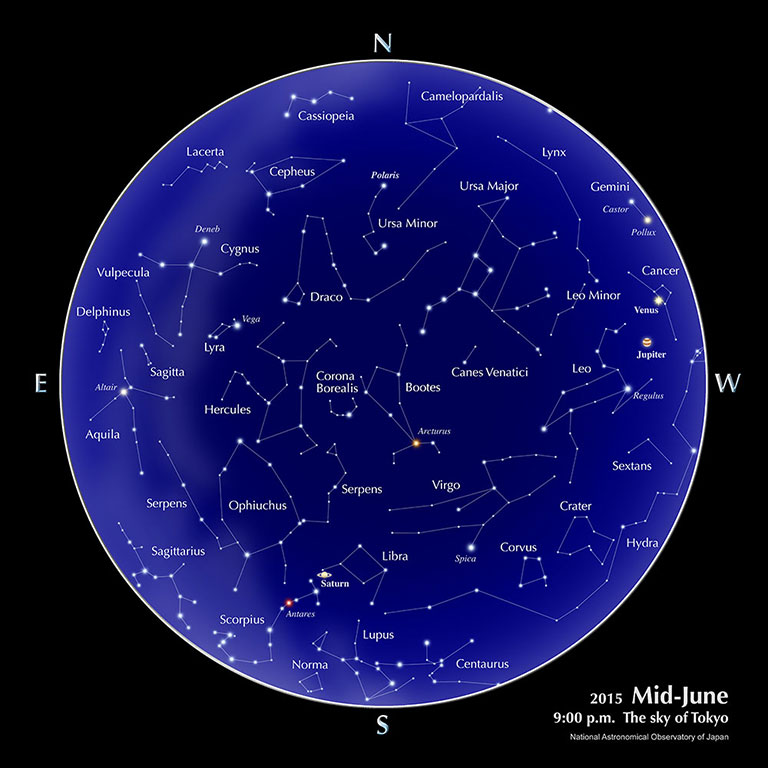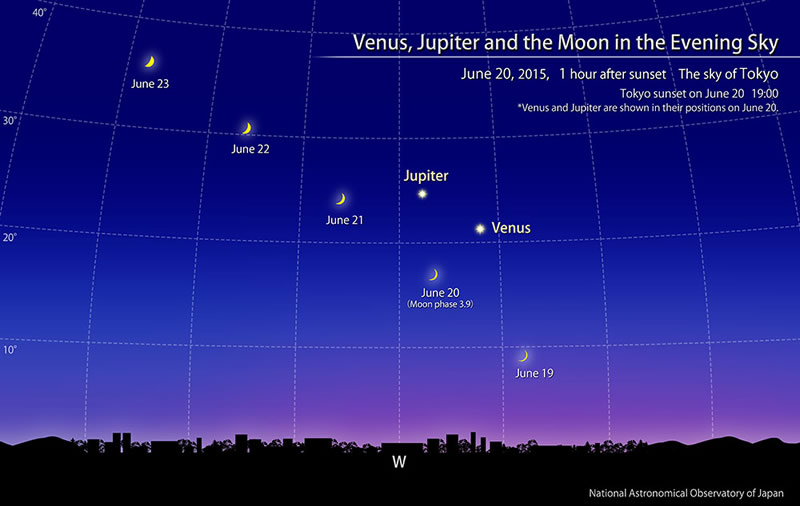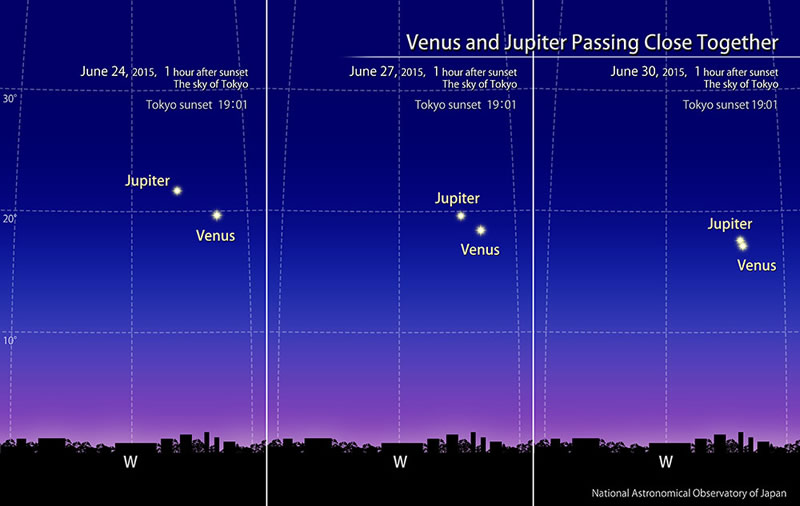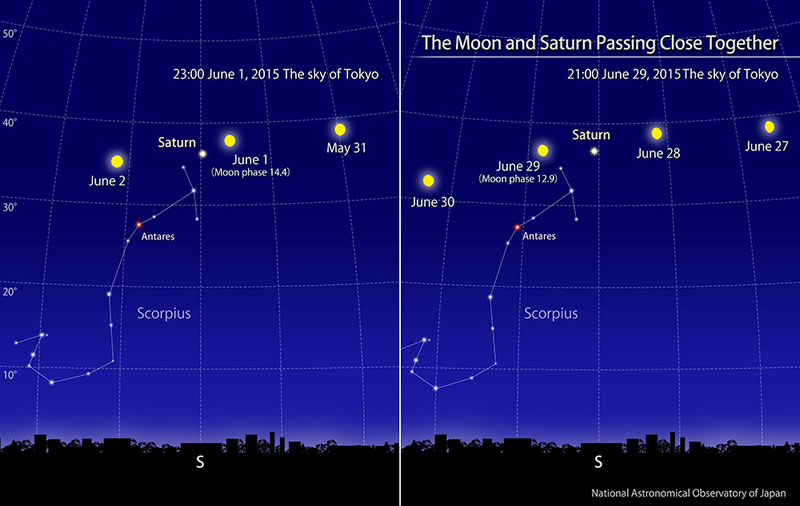June, 2015
Index
The sky of Tokyo

Calendar (June)
| 3 | Full Moon |
| 7 | Greatest Eastern Elongation of Venus |
| 10 | Last Quarter |
| 12 | Mercury at stationary point |
| 13 | Neptune at stationary point |
| 15 | Mars at conjunction |
| 16 | New Moon |
| 22 | Summer solstice (Sun’s ecliptic longitude 90°) |
| 24 | First Quarter |
| 25 | Greatest Western Elongation of Mercury |
Planets
- Mercury
- In the beginning and middle of the month, Mercury is positioned close to the Sun and not suited for observations. From around the time it reaches its greatest western elongation on the 25th, it can be found low in the eastern sky just before sunrise. Mercury’s brightness around the time of greatest western elongation is Magnitude 0.5.
- Venus
- Venus shines brightly in the western sky after sunset. It reaches its greatest eastern elongation on the 7th. After that, its elevation gradually decreases, but it continues to be easy to observe. Even at the end of the month, its elevation is still over 20 degrees when the time is 30 minutes after sunset. Its brightness is Magnitude -4.3 to -4.4.
- Mars
- Mars appears close to the Sun and can’t be observed.
- Jupiter
- At the beginning of the month, Jupiter is located in the constellation Cancer. Starting in the middle of the month it enters the constellation Leo. Look in the western sky after sunset. The brightness is Magnitude -1.9 to -1.8.
- Suturn
- Located in the constellation Libra, Saturn can be observed almost all night long. The brightness is Magnitude 0.1 to 0.2.
Source: Ephemeris Computation Office, NAOJ
With the “Sky Viewer” you can easily explore the appearance of a typical urban night sky (planets and constellations are visible).The Celestial Phenomenasection of the glossary explains the planetary phenomena terms: greatest elongation, opposition, conjunction, stationary, etc.
Topics
Venus, Jupiter and the Moon in the Evening Sky

Venus, the evening star, which reaches its greatest eastern elongation on the 7th, shines brightly in the western sky after sunset. Also, Jupiter can be seen gleaming in a position a little higher than Venus. The positions of these two planets gradually move closer together; at the end of the month, they appear very close. The thin Moon is also close on the 20th and 21st, adding flavor to these 2 bright planets in the evening sky. In particular on the 20th, you can enjoy the beautiful spectacle of these 2 planets and the Moon gathering together in the evening sky.
Venus and Jupiter Passing Close Together

The positions of Venus and Jupiter, the 2 bright planets visible in the western sky after sunset, appear to gradually approach one another. It becomes a conjunction at the end of the month. They appear the closest on July 1st, separated by less than the apparent size of the Moon. You can enjoy the close approach of Venus and Jupiter until the first half of July. Watch as these 2 bright planets appear to approach each other day by day in the evening sky.
The Moon and Saturn Passing Close Together

From evening until midnight on the 1st, and again in the evening of the 29th, the Moon appears to approach Saturn located in the constellation Libra. This time it won’t become a conjunction like it did in May, but the sight of Saturn and the Moon close together will draw the eye in the evening sky. In July, there is another chance to see a conjunction like in May.